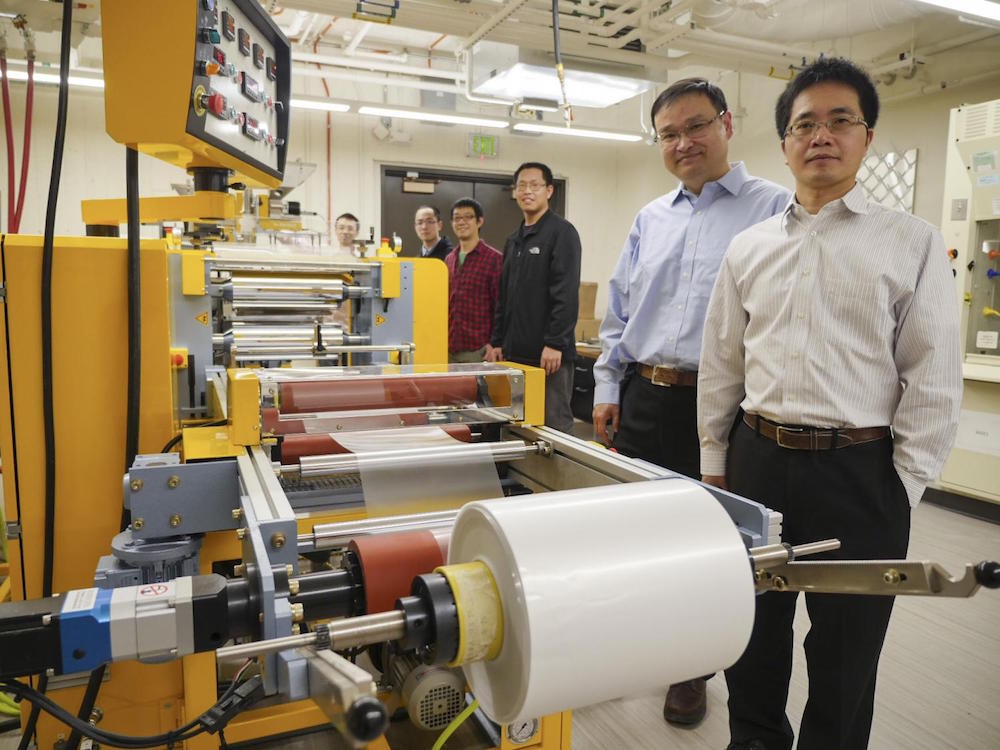
News
CU Boulder metamaterial film brings the cool without consuming energy
February 10, 2017 - A team of University of Colorado Boulder engineers has developed a scalable manufactured metamaterial (an engineered material with properties not found in nature) able to cool objects—even under direct sunlight—while consuming zero energy or water.
February 10, 2017 By Anthony Capkun
 “We feel that this low-cost manufacturing process will be transformative for real-world applications of this radiative cooling technology.” Photo courtesy University of Colorado Boulder.
“We feel that this low-cost manufacturing process will be transformative for real-world applications of this radiative cooling technology.” Photo courtesy University of Colorado Boulder. When applied to a surface, the metamaterial film cools the object underneath by reflecting incoming solar energy back into space while simultaneously allowing the surface to shed its own heat in the form of infrared thermal radiation.
The new material could provide a means of supplementary cooling for thermoelectric power plants, or on our rooftops.
The researchers’ glass-polymer hybrid material measures just 50-µm (micrometres) thick—slightly thicker than the aluminum foil used in the kitchen—and can be manufactured economically on rolls, making it a potentially viable large-scale technology for both residential and commercial applications.
“We feel that this low-cost manufacturing process will be transformative for real-world applications of this radiative cooling technology,” said Xiaobo Yin, co-director of the research.
The material takes advantage of passive radiative cooling, the process by which objects naturally shed heat in the form of infrared radiation, without consuming energy. Thermal radiation provides some natural nighttime cooling and is used for residential cooling in some areas, but daytime cooling has historically been more of a challenge. For a structure exposed to sunlight, even a small amount of directly-absorbed solar energy is enough to negate passive radiation.
The challenge for the CU Boulder researchers, then, was to create a material that could both reflect any incoming solar rays back into the atmosphere and provide a means of escape for infrared radiation. To solve this, the researchers embedded visibly-scattering but infrared-radiant glass microspheres into a polymer film. They then added a thin silver coating underneath to achieve maximum spectral reflectance.
“Both the glass-polymer metamaterial formation and the silver coating are manufactured at scale on roll-to-roll processes,” added Ronggui Yang.
“Just 10 to 20 square metres of this material on the rooftop could nicely cool down a single-family house in summer,” said Gang Tan.
In addition to being useful for cooling buildings and power plants, researchers believe the material could also help improve the efficiency and lifetime of solar panels. In direct sunlight, panels can overheat to temperatures that hamper their ability to convert solar rays into electricity.
“Just by applying this material to the surface of a solar panel, we can cool the panel and recover an additional one to two percent of solar efficiency,” said Yin. “That makes a big difference at scale.”
“The key advantage of this technology is that it works 24/7 with no electricity or water usage,” said Yang. “We’re excited about the opportunity to explore potential uses in the power industry, aerospace, agriculture and more.”
The engineers plan to create a 200-m2 “cooling farm” prototype in Boulder this year.
PHOTO: “We feel that this low-cost manufacturing process will be transformative for real-world applications of this radiative cooling technology.” Photo courtesy University of Colorado Boulder.
Print this page